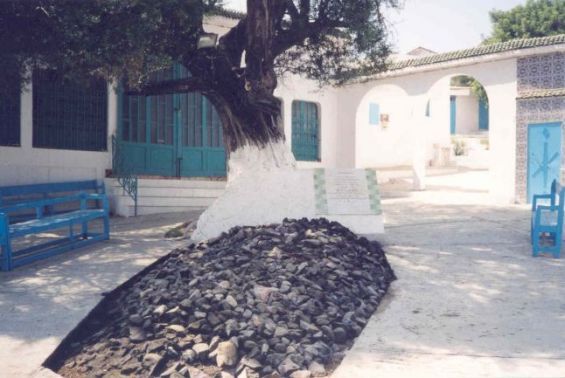Every year on Lag B'Omer, a Jewish holiday which occurs on the 18th day of the Hebrew month of Iyar, Moroccan Jews travel as pilgrims to the tomb of Rabbi Amram Ben Diwan in Ouezzane. In the town, located in northern Morocco, the Moroccan Jewish community remembers the story of the Saint who came to the Kingdom in the eighteenth century as an «emissary».
Historical accounts tracing back the life of this Jewish saint claim that he was born in Jerusalem. Before traveling to Morocco, Ben Diwan lived in Al Khalil (Hebron for Jews), a Palestinian city located in the southern West Bank.
According to Hervat Pinto, an institution that preserve the memoire of Rabbi Haim and Rabbi Moché Aaron Pinto Zatsal, Ben Diwan was «chosen by the Rabbis of Hebron as an emissary to Morocco».
Sent as an emissary to Morocco
In fact, Ben Diwan was tasked with «collecting money for the yeshivas (Jewish educational institutions that focuse on the study of traditional religious texts) of the Holy Land». Indeed, Ben Diwan left for Morocco in 1743, where he established himself a name in Ouezzane, as aforementioned.
In the city, he founded a «Talmud-Torah and a yeshiva, where numerous students came to quench their thirst for study by drinking from the source of his words», the same platform wrote in an article.
 Rabbi Amram Ben Diwan's tomb. / Ph. DR
Rabbi Amram Ben Diwan's tomb. / Ph. DR
During his stay in Morocco the Jewish Rabbi gained respect and notoriety. «Jews would travel from all the towns in Morocco to urgently seek him in order to be delivered, through his merit, from their troubles», the same source added.
Jews in Morocco swore by his miracles and blessings and called him Tzaddik and defender. But after a long sojourn in the Kingdom, Rabbi Amram Ben Diwan decided to return to Jerusalem.
Historical accounts make mention of his short-lived stay in Jerusalem, where he put himself in a dangerous situation. Studying Torah, Ben Diwan decided to visit the «tomb of the Patriarchs», known to Jews as the Cave of Machpelah and to Muslims as the Sanctuary of Abraham, in Hebron.
«At that time, Jews were not permitted to enter into the tomb of the Patriarchs», said the same platform, stressing that this prohibition did not stop Rabbi Amram from wanting to pray by the tomb. To circumvent this ban, the Rabbi dressed like a Muslim and entered the holy location.
«No one doubted that this 'Muslim', so absorbed as he was in his prayer, was nothing other than a Jew. Suddenly, as Rabbi Amram was preparing to leave, an Arab saw and recognized him. Immediately, he ran to the Pasha and informed him of the offense», the same platform recalled.
Back to Morocco to bless his visitors
Rabbi Ben Diwan knew that he would be punished or sent to prison for his deed. He took his son Hayim and returned to Morocco, where he was welcomed. The Rabbi opted for Fes. He stayed at the house of by Rabbi Menasheh Ibn Denan, one of the leaders of Fes’ Jewish community.
Alongside his son Haim, Amram Ben Diwan toured the Kingdom before returning to Ouezzane. The legend says that Ben Diwan felt sick once in the town, where he passed away.
According to the book of Issachar Ben-Ami «Saint Veneration Among the Jews in Morocco» (Wayne State University Press, 1998), before Rabbi Amram died he «asked to be buried alongside his tree, while another (tradition) claims the tree grew after the rabbi had been buried at that spot».
 The tree near Saint Amram Ben Diwan's grave. / Ph. DR
The tree near Saint Amram Ben Diwan's grave. / Ph. DR
Indeed, Rabbi Amram ben Diwan’s tomb lies near a «large tree, similar to an olive», the same book recalled. His miracles, according to Ben-Ami, survived even after his death. «To give birth relatively easily, Jewish women would wear belts belonging to Rabbi Amram», he wrote.
Another account suggests that he appears in the dreams of non-Jews. The same book claims that «a boy who doubted the miracles of Amram dreamed that a man named Amram slapped him and sent him to jail».
Other accounts suggest that Amram Ben Diwan appears as a dove sometimes near his grave, a burial site that has many small stones «representing petitions left by visitors».





 chargement...
chargement...













